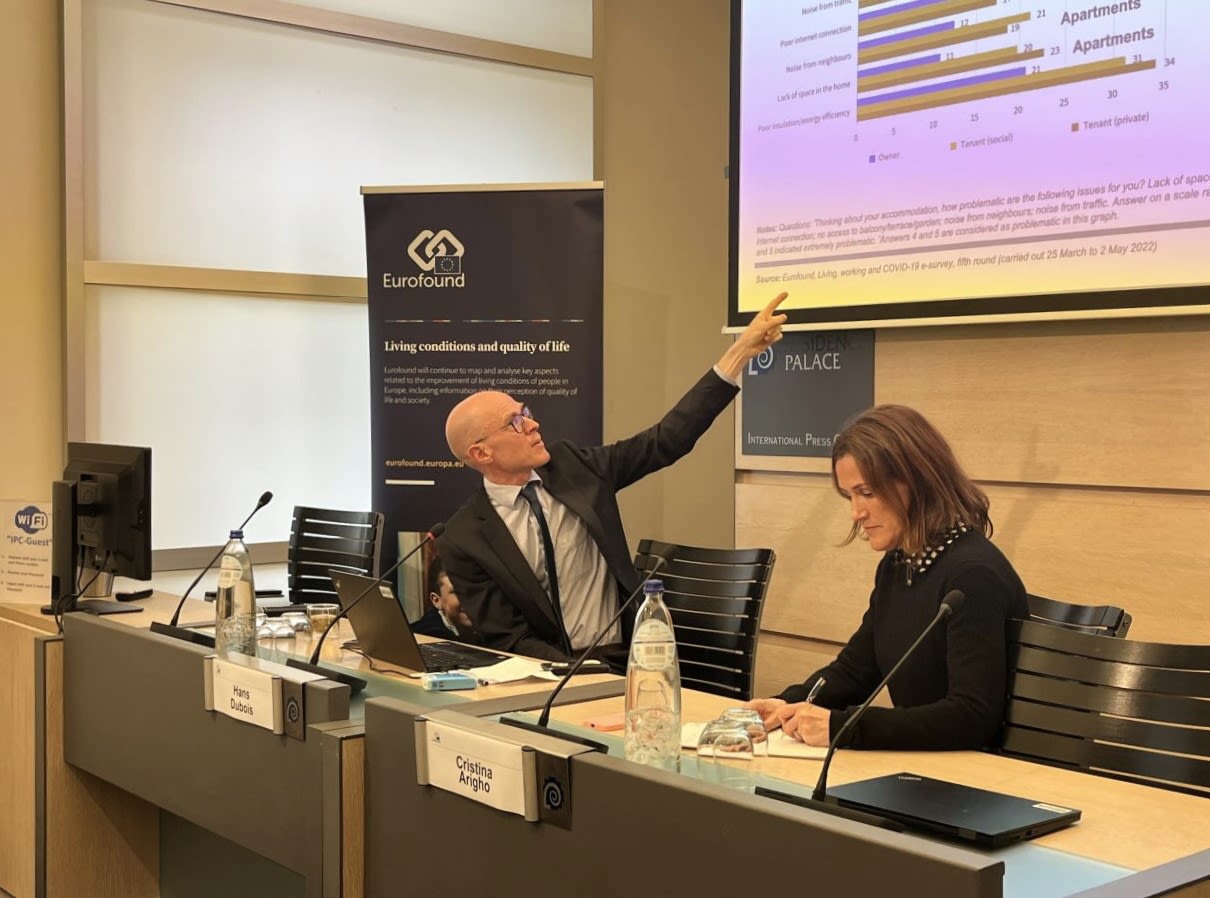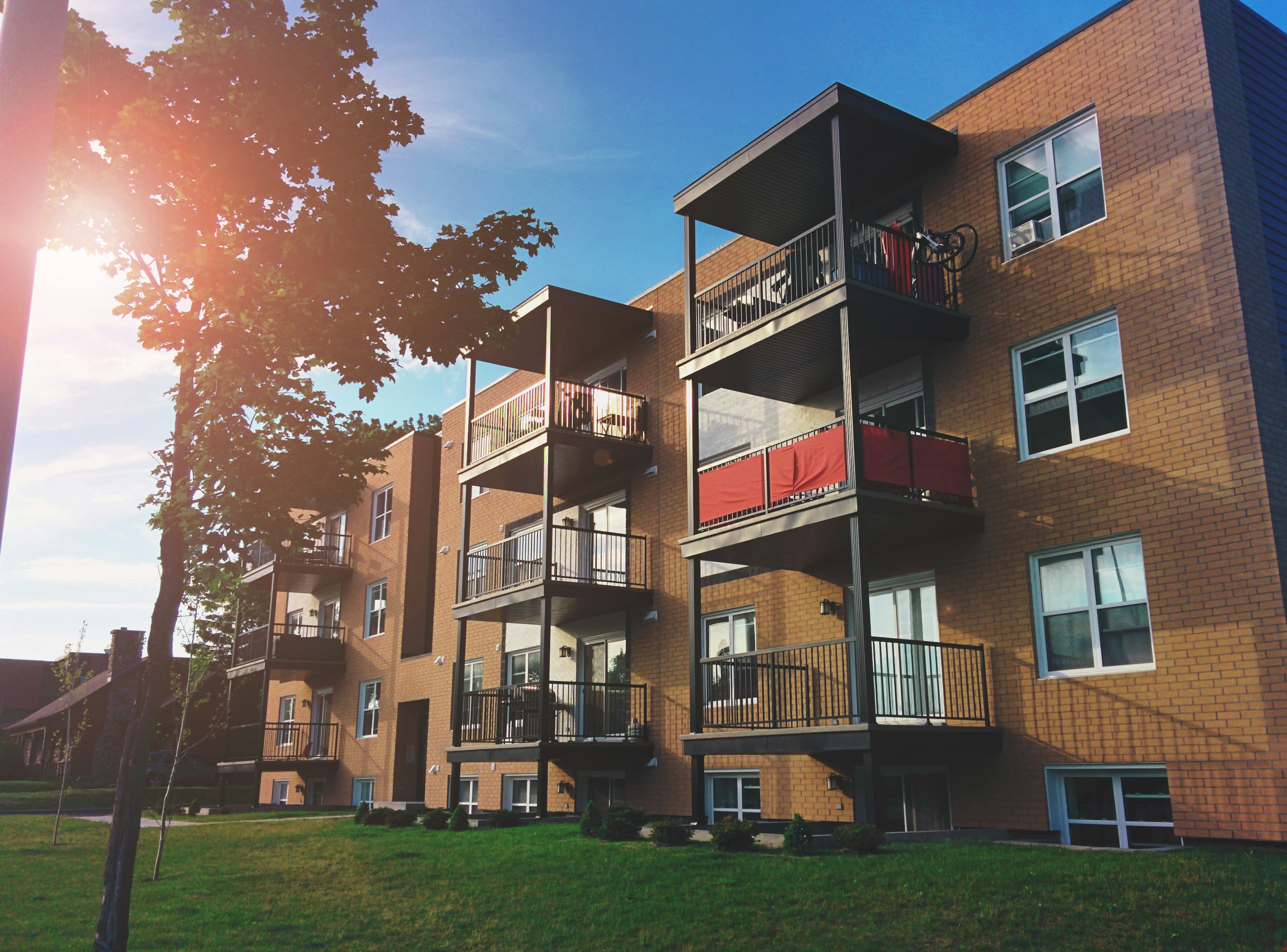Chapter 7:
Housing crisis
Housing crisis: What can the EU do?

Key insights
Private renters face the greatest housing insecurity. Their housing costs increased by 23% between 2010 and 2019, while 46% of private renters reported feeling at risk of losing their home due to unaffordability.
The green transition can improve housing quality. EU initiatives like the Affordable Housing Initiative, which aims to renovate 35 million buildings by 2030, could significantly improve housing adequacy. However, without safeguards, these efforts risk raising rents instead of benefiting low-income tenants.
Eviction prevention must start early. Early intervention support measures are most effective when triggered proactively, rather than after an eviction notice is issued.
Middle-income earners are being excluded from support. Strict eligibility rules leave many just above income thresholds without access to social housing or benefits.
Homelessness remains a challenge despite some progress. While three-quarters of Member States have implemented Housing First initiatives, many are small scale, often housing less than 1% of the homeless population.
Spiralling housing costs and lack of availability of affordable housing are causing anxiety and frustration across the EU. House prices and rent have been rising faster than incomes. Renters are worried about evictions, and younger people are having to live longer in their parental homes, while others can afford little else after paying their housing costs or are confined to low-quality housing. Even homeowners are not spared, as the cost of keeping a house warm has escalated, and many face higher mortgage payments than they had before the interest rate increases earlier this decade.
In the run-up to the 2024 European elections, the housing crisis emerged as a key issue across the whole of the EU and the entire political spectrum. Commission President Ursula von der Leyen has responded with promises to do more. She is pushing for a coordinated approach and has already outlined ambitious proposals for 2024 to 2029 that give housing policy visibility and weight. These include the appointment of the first Commission member whose responsibilities include housing, as well as the first-ever European Affordable Housing Plan and a pan-European investment platform for affordable and sustainable housing.
As policy attention intensifies, Eurofound’s EU-wide research mapping unaffordable and inadequate housing and policies to address it becomes even more salient, offering insights into the multifaceted nature of the housing crisis and potential strategies to address it effectively.
'The housing crisis across Europe is reshaping lives, widening inequalities, and pushing affordable, secure homes even further out of reach.'

Breaking down the housing crisis

When we talk about the housing crisis, it is important to recognise that it is a complex, multifaceted issue with far-reaching consequences for individuals and families across different socioeconomic backgrounds, age groups and regions. It affects everyone, including renters, homeowners and those experiencing homelessness; its impact is felt across society, creating ripple effects that influence everything from employment stability to mental health, family formation and social mobility.
The crisis has many tentacles, extending beyond just affordability concerns. It encompasses a range of structural issues, including the lack of access to social housing, the growing divide between wages and property prices and rents, precarious rental conditions, challenges related to rising housing costs, household over-indebtedness, properties left vacant, lack of access to services and amenities, and poor-quality housing and neighbourhoods.
Some homeowners are affected by increasing mortgage interest rates or struggle with high energy and maintenance costs. In several countries, poor housing conditions and lack of adequate infrastructure or access to services are also key concerns.
While low-income earners and vulnerable groups are often hit the hardest, even middle-income households increasingly struggle to secure affordable and stable housing, particularly in urban centres where demand far outstrips supply.
Research by Eurofound identifies unaffordability in relation to four types of housing problems:
- Housing exclusion: People who are excluded from housing. This includes both young people who cannot afford to leave the parental home and people who are homeless.
- Housing insecurity: People who consider it likely that they will need to leave their home within the next three months. Unsurprisingly, tenants renting from private lessors are hit the hardest by this.
- Problematic housing costs: High housing costs can compromise a household’s ability to afford non-housing goods and services, depending on its financial resources (income and wealth) and non-housing needs.
- Housing inadequacy: Improving the quality of housing is a big concern and cannot be seen as a separate issue from the quality of the surrounding area.
Among those most exposed to the housing crisis are private renters – particularly those with lower incomes – who face a unique combination of all these various housing problems.

Private renters in vulnerable situations

In the EU overall, housing costs increased dramatically between 2010 and 2019 for tenants (by 23%), while for homeowners they went up by 8%. The highest percentage increases among tenants (exceeding 40%) were recorded in Portugal, Poland, Greece, Bulgaria, Estonia and Latvia.
Housing insecurity is by far the largest among renters on the private market. Eurofound research shows that 46% of private rental market tenants feel that there is some risk that they will have to leave their home in the next three months because they can no longer afford it. Greece had the highest proportion of respondents (of any tenure status) saying that they might need to leave their accommodation in the coming months because they can no longer afford it (22%), followed by Cyprus (19%), and Estonia, Finland and Latvia (16%) (Figure 27).
Figure 27: Difficulty making ends meet and housing insecurity, EU Member States and the EU, 2024 (%)

Squeezed middle locked out of housing

Low-income households are not the only ones struggling. Increasingly, middle-income earners are also finding themselves priced out of decent, secure housing.
Often referred to as the ‘squeezed middle’, these households are caught between income thresholds for support and rising housing costs. They earn too much to qualify for social housing, rent subsidies or ownership support, but too little to afford stable, quality housing.
Despite falling interest rates benefiting mortgage holders in recent years, rising energy costs and inflation have further squeezed disposable incomes, making it harder for middle-class households to maintain housing stability.
Rigid income thresholds exclude the squeezed middle
One key challenge for the squeezed middle is the rigid income thresholds that determine eligibility for social housing, rent subsidies and ownership support. In many EU Member States, these thresholds are fixed, meaning that even a small increase in income can render households ineligible for any support. Which means, if you earn even a bit too much, you are not entitled to anything.
However, some Member States have found flexible solutions. Germany and the Netherlands use gradual income thresholds, preventing sudden exclusion from support when incomes rise slightly. Italy’s Edilizia Residenziale Sociale (ERS) offers public housing for those who earn too much to qualify for traditional social housing but too little to afford private market rents.
Without such mechanisms, many middle-income households may remain locked out of parts of the housing market, forced into the private rental market, where rising rents and unstable tenancy conditions exacerbate their financial strain.

Homeowners under pressure

Even homeowners do not escape unscathed from the impacts of the housing crisis. While renters face severe housing insecurity, homeowners are also experiencing financial strain.
House prices have increased, the cost of keeping a home warm has escalated, and flexible-rate mortgage payments have increased, reducing the disposable income of many households. High housing costs can compromise a household’s ability to afford non-housing goods and services, depending on its financial resources and non-housing needs.
Many of the homeowners struggling are older people living in rural areas, whose incomes are often low, and people who live in energy-inefficient homes. They find themselves unable to maintain their homes at a suitable temperature due to poor energy performance and financial strain: this is true of at least 15% of outright owners in Bulgaria, Cyprus, Greece, Lithuania and Portugal. In 2023, 9% of all rural dwellers owned their home outright but could not keep it at an adequate temperature. The cost-of-living crisis has further disturbed the delicate balance of housing costs and other household outgoings.

Complexities of housing support

While financial housing support is important for those receiving it, it can drive up prices and, in the case of ownership support, fuel over-indebtedness. It can also trigger inequalities – due to fixed income or age entitlement thresholds – and groups of people entitled to these benefits may not receive them. Social housing is more or less absent in many Member States, and where it is present, it comes with long waiting lists, even in Member States with larger social housing stocks.
The most obvious answer may simply be to increase the housing supply, by building and renovating. Supply can also be increased by bringing vacant dwellings to the market and by ensuring better connections between areas where there is a sufficient supply of housing and jobs and services, ideally by public and active modes of transport. This would reduce non-housing costs for inhabitants, while decreasing the EU’s energy dependence (in line with the Green Deal and RePowerEU).
Preventing evictions
One of the most visible and distressing outcomes of housing insecurity is eviction. Tackling this issue is crucial – not just for protecting individuals, but also for preventing deeper social exclusion.
Policy actions aligned with the European Pillar of Social Rights are crucial in addressing housing insecurity and protecting people against forced evictions. The Pillar emphasises access to quality social housing, shelter and services for homelessness and safeguards against evictions, underscoring the importance of housing security.
Eurofound research maps out many initiatives by EU Member States to prevent evictions. Evidence suggests that early intervention is key – support should be triggered automatically when payment issues arise, rather than waiting for an eviction notice.
Some Member States have proactive eviction prevention strategies. In Sweden, lessors and housing companies must inform the state debt collection agency, Kronofogden, when issuing an eviction notice. Tenants have three weeks to pay arrears, while the agency puts them in contact with social services for income support, advice on budgeting and help addressing the causes of the arrears. If needed, the municipality takes over rent payment, with the tenant repaying it later. Between 2018 and 2022, this initiative prevented between 55% and 62% of eviction notices from leading to actual evictions.
Initiatives in other Member States intervene at an even earlier stage, offering support as soon as tenants fall into arrears on rent or utility bills. For instance, in Amsterdam, the Vroeg Eropaf initiative reaches out to households in financial distress, offering debt advice and assistance before eviction proceedings begin.
©Fizkes/Adobe Stock
©Fizkes/Adobe Stock
Improving housing through the green transition
Beyond housing insecurity, many households struggle with poor housing conditions. The EU’s green agenda offers a valuable opportunity to improve housing quality while addressing climate goals.
Although housing is a national competence, the EU supports improvements through funding and strategic guidance. As part of the Renovation Wave Strategy, the Affordable Housing Initiative aims to renovate 35 million buildings by 2030, while the Social Climate Fund supports energy-efficient renovations across Member States.
The green transition is set to reshape Europe’s housing situation through long-term changes in energy consumption and production. Eurofound research indicates that more can be done to ensure that Green Deal resources effectively address housing challenges.
Major EU investments in energy efficiency and household solar energy generation can lower emissions and reduce household energy dependence, and contribute to the EU’s broader goal of reducing dependence on imported energy. This is central to the RePowerEU initiative, which aims to accelerate the shift away from fossil fuel imports through domestic renewable energy production and improved energy performance in buildings. To address housing affordability and energy resilience effectively, these benefits must reach low-income groups, especially private and social tenants, who are more likely to report problems with poor energy efficiency.

Is Europe failing homeless people?

At the sharpest end of the housing crisis are those with no housing at all. Despite policy efforts, homelessness remains a persistent challenge across the EU.
Eurofound research examines the success of Housing First programmes. Unlike traditional models that require engagement with services before offering housing, Housing First prioritises stable accommodation upfront. Around three-quarters of EU countries are experimenting with or have implemented initiatives inspired by the Housing First approach.
Eurofound’s mapping of Housing First policies shows that these policies have been largely successful in keeping people out of homelessness. Finland’s success is a standout example: from 2008 to 2019, the number of homeless people fell by approximately 1,800, with 75% of programme participants transitioning to supported or independent living.
Yet, in most countries, these programmes remain small scale, reaching fewer than 1% of homeless populations. Some still require participation in services, limiting access. For Housing First to truly deliver, housing must be independent, stable and truly unconditional on engagement with support services.
Stabilising and reshaping EU housing
Tackling housing exclusion, insecurity and inadequacy and addressing problems making ends meet due to high housing costs requires more than standalone housing policies. A broader, joined-up strategy is needed – one that integrates housing with social protection, public services and the quality of the home’s surrounding area.
Increasing housing supply – through new construction, renovation and better use of vacant dwellings – could play a role in addressing the crisis, particularly when aligned with goals to green housing and improve local areas. But tackling the housing crisis also means investing in surrounding infrastructure and public services.
Access to good-quality public services such as healthcare, childcare, education and transport could prove significant in preventing high housing costs from reducing standards of living. All else being equal, spending 40% of their income on housing is likely to be more problematic for someone with significant healthcare and transport needs – unless these services are accessible and available at low or no cost.
Improving the quality of the local area in neighbourhoods that are currently disconnected from jobs and services, are unsafe or lack green areas could help alleviate the housing crisis. In particular, high-quality public transport and cycling infrastructure would connect these areas with education and employment centres at a low cost (or free) for users. This has the potential to improve the situation for the many people pushed out of expensive city centres into apartments in the suburbs.
Addressing the housing crisis is not just a matter of increasing supply, it also calls for a reform of the support systems. Housing benefits and mortgage relief must be designed to avoid exclusion, ensure take-up, and complement wider investments in social infrastructure and public services.
The housing crisis affects demographics, mobility and work–life balance. A coordinated EU-level approach – rooted in the European Pillar of Social Rights – is essential to ensure stable labour markets, fair social protection and access to affordable, quality homes.



